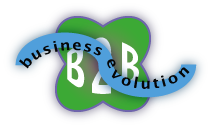B2B Customers Getting Social Fast: How Marketing and Sales Can Evolve explains how clients/customers are smarter and want a new kind of relationship | The new economics of business reputation
 While preparing to launch Social Business Services for B2B Sales in January 2012, I have been engaged in its Ecosystem Audit. I have plumbed online conversations about B2B Sales and Marketing adoption of social business (erstwhile social media). I have been struck by a recurring realization: a large part of Marketing and Sales as we know them is significantly out of alignment with B2B customers. Social business is permeating customer networks throughout the economy and changing customer behavior and expectations. This has created a rare opportunity for B2B marketing and sales people who understand and respond ahead of the market. If I’m right, this could be one of the most important posts you read this year.
While preparing to launch Social Business Services for B2B Sales in January 2012, I have been engaged in its Ecosystem Audit. I have plumbed online conversations about B2B Sales and Marketing adoption of social business (erstwhile social media). I have been struck by a recurring realization: a large part of Marketing and Sales as we know them is significantly out of alignment with B2B customers. Social business is permeating customer networks throughout the economy and changing customer behavior and expectations. This has created a rare opportunity for B2B marketing and sales people who understand and respond ahead of the market. If I’m right, this could be one of the most important posts you read this year.
Two quick examples of misalignment: one of Marketing’s underlying assumptions is that it is not economically feasible to have large-scale one-on-one customer conversations, so marketing must achieve scale through secondary research (and remain isolated from the customer). One of Sales’ key assumptions is that it must rely on primary one-on-one prospect/customer communications to drive value. Both of these are increasingly false, so I’ll drill down on them before offering practical recommendations for how Marketing and Sales can explore social business at a new level.
Perspective
As head of marketing for several B2B firms with direct sales forces since the 1980s, I have worked with my fellow execs in Sales, Operations, Finance & IT to drive the top line. I have sat through dozens of conferences and professional association meetings in which presenters and participants complained about how Sales and Marketing didn’t work together. As a management consultant, I have advised clients in adopting numerous disruptive technologies that have confronted enterprise functions with change. These experiences lead me to believe that social business will transform B2B Marketing and Sales during the next 5-10 years. Moreover, organizations that begin the transformation process earlier will profit at the expense of laggards because social business will improve enterprises’ communications and collaborations with customers by an order of magnitude.
Reexamining B2B Marketing and Sales
 To appreciate the magnitude of this transformation, let’s start by agreeing on some basic definitions. Obviously, these vary considerably by organization, but they hold true in most B2B companies. B2B marketing and B2B sales (also “business development”) are usually organized in different silos. They are motivated by different goals and outcomes that are theoretically aligned but are often not aligned in practice.
To appreciate the magnitude of this transformation, let’s start by agreeing on some basic definitions. Obviously, these vary considerably by organization, but they hold true in most B2B companies. B2B marketing and B2B sales (also “business development”) are usually organized in different silos. They are motivated by different goals and outcomes that are theoretically aligned but are often not aligned in practice.
B2B Marketing usually refers to several practices that vary with the type of business, but the endgame is to define/control message and produce leads that are worked by Sales:
- Defining the firm’s brand, strategy, value proposition and “message”; this includes managing how various brand elements are used (elevator pitches, logos, colors..)
- Designing and running outbound “campaigns” via email marketing, snailmail..
- Attracting/capturing inbound leads via rich media, SEO, SEM, thought leadership..
- Conducting database management (CRM..)
- Producing “collateral” (websites, brochures, templates.. for use by Sales)
- Managing the firm’s participation in conferences and trade shows
- (often) Managing the firm’s channel and strategic alliances
- All of these practices are grounded in scaled group communications; i.e. Marketing communicates with researched demographics, not individuals because they usually have no relationships with individual prospects
B2B Sales/Business Development is a contact sport that usually refers to a direct sales force, which is sometimes supported by indirect or inside sales:
- Identifying leads via face to face, telephone or email interactions with their individual professional networks; often salespeople are hired for their career-accumulated networks
- Working leads sourced from Marketing and their individual work according to a gated pipeline or funnel along which leads approach conversion
- Conducting (telephone) calling and email campaigns
- Getting and conducting meetings with prospects
- Working conferences and trade shows under Marketing’s direction
- Entertaining clients and prospects (golf, opera, sports, other events)
- Collaborating with channel partners’ representatives to exchange and work leads
- Closing deals and handing off to “delivery” teams (or, in the case of professional services, managing delivery)
- All of these practices are based on communications with individual prospects
In summary, Marketing has served as the firm’s research and scalable communications arm while Sales has been responsible for doing the deals. Marketing’s value proposition has been researched intelligence, strategy and scaled communications. Salespeople would develop intelligence based on direct feedback with their own networks. They have been focused on their own books of business and have had little information on what other prospects were thinking. But they have interacted with individuals and have been intimately engaged in helping customers understand or apply the product/service to obtain business results, so in a sense their information has been more “real” than Marketing’s. It has been individualized. Theoretically, the information created by Sales and Marketing are complementary—when they communicate continuously and completely, which rarely happens because most organizations usually fall short of their goals or strive to surpass them. This often creates a struggle for authority between Sales and Marketing. Whose information and approach is more important?
How Social Business Is Disrupting B2B Marketing and Sales
 Web 2.0 social venues like LinkedIn, Twitter, mainstream media sites with comments, and blogs have created the opportunity for prospects and customers to connect with and educate each other very quickly, which enables them to be much smarter. They no longer depend on Sales to educate them as in the past. I heard Paul Gillin (“Social Marketing to the Business Customer“) speak this morning, and he nailed it: “The sales funnel has inverted, the new funnel is: 1) go to where people are; 2) listen to what they care about (in their terms, not yours); 3) invite interaction (by helping them understand their situation); 4) respond to them and adjust your approach.” (paraphrased). The point is, most salespeople go to their networks and try to create contacts for the pipeline. They don’t think of joining very relevant conversations (because scalable social business conversations haven’t existed before), helping people with problems, building their reputations and letting people come to them. The customer is far smarter than before, so they self-educate and approach people whom they (or their friends) trust. This is a different world. Sales organizations that don’t realize it will be competing for a smaller market each year; the smartest prospects are dynamic and self-educating. They need collaborative salespeople who form relationships built on trust, people who serve, don’t sell. This world is accessible through transparent (i.e. public) social venues that have far different economics of communications and relationship than traditional B2B Marketing or Sales can imagine.
Web 2.0 social venues like LinkedIn, Twitter, mainstream media sites with comments, and blogs have created the opportunity for prospects and customers to connect with and educate each other very quickly, which enables them to be much smarter. They no longer depend on Sales to educate them as in the past. I heard Paul Gillin (“Social Marketing to the Business Customer“) speak this morning, and he nailed it: “The sales funnel has inverted, the new funnel is: 1) go to where people are; 2) listen to what they care about (in their terms, not yours); 3) invite interaction (by helping them understand their situation); 4) respond to them and adjust your approach.” (paraphrased). The point is, most salespeople go to their networks and try to create contacts for the pipeline. They don’t think of joining very relevant conversations (because scalable social business conversations haven’t existed before), helping people with problems, building their reputations and letting people come to them. The customer is far smarter than before, so they self-educate and approach people whom they (or their friends) trust. This is a different world. Sales organizations that don’t realize it will be competing for a smaller market each year; the smartest prospects are dynamic and self-educating. They need collaborative salespeople who form relationships built on trust, people who serve, don’t sell. This world is accessible through transparent (i.e. public) social venues that have far different economics of communications and relationship than traditional B2B Marketing or Sales can imagine.
More specifically, social business now gives Sales much more access to scaled individuated communications. Salespeople that understand this are on the verge of a new golden age due to mass collaboration opportunities in online social networks and forums. For example, they can:
- Introduce business scenarios to hundreds of prospects in online forums and ask their advice (for example, when pitching a solution to a prospect, they can get input on the prospect’s situation and even objections, leading to unprecedented credibility)
- Discuss proposed contract terms in forums and get other members’ input; if they are even more daring (I’ve done this), point the prospect to the online conversation
- Respond to prospects’ discussions about situations that are relevant to the firm’s product/service
- Share articles that address prospects’ top of mind concerns via major platforms (Twitter, Facebook, Google+, LinkedIn) and in forums
- Create networks in platforms that will deliver relevant articles to them for free
- Blog about prospects’ situations and their thoughts about them
- Note that all of these communications are digital and forever; these artifacts are (mostly) individualized and can be reused by salespeople or discovered by prospects at any time in the future
Meanwhile, mass communication’s impact on prospects has been plummeting since the early 2000s. Very few people fully appreciate the reason: human beings have almost always preferred to be considered and communicated with as individuals. During the 20th century mass communication age, people accepted mass communications because they were new and marvelous; however, today, they are abjectly normal and usually superfluous. Even more poignant, many-to-many communication tools have been changing expectations: people increasingly prefer to learn through their networks, “friends” or “connections” rather than mass communications because networks are more personal. People want to be addressed as individuals. To have impact, communications should apply to the prospect’s individual circumstances. This is where Marketing and Sales have to be if they want to remain relevant.
How B2B Marketing and Sales Can Evolve with Social Business
 Marketing usually sponsors CSRA‘s social business engagements, so I have numerous data points. Marketing’s biggest mental roadblock is the habit of being isolated from the customer. “But I don’t touch the customer, that’s Sales.” No, Marketing has to evolve its approach because it’s more out of alignment with the market with each passing quarter. Marketers that realign themselves will unleash value that they could only dream about before. Here are a few specific ideas to get your evolution thinking started:
Marketing usually sponsors CSRA‘s social business engagements, so I have numerous data points. Marketing’s biggest mental roadblock is the habit of being isolated from the customer. “But I don’t touch the customer, that’s Sales.” No, Marketing has to evolve its approach because it’s more out of alignment with the market with each passing quarter. Marketers that realign themselves will unleash value that they could only dream about before. Here are a few specific ideas to get your evolution thinking started:
- Marketing makes most decisions in isolation from real customers (research and focus groups are too artificial because they rarely focus on customer-to-customer interactions, which are an order of magnitude more enlightening). Marketing can start infusing marketing research with direct communication with prospects and customers. For a hypothetical example, let’s say that research shows that the firm’s product/service could be relevant to a new type of business/geography/market. Marketing can engage proposed prospects in that market in forums, blogs and comments in mass media articles (i.e. Wall Street Journal). There is no need to make assumptions in isolation. This is fast and cheap to do. But Marketing needs to develop skills in starting and managing online discussions without marketing to get best results.
- Conferences and trade shows can be fantastic opportunities to connect with differentiated prospects; however, I’ve yet to work with a company that even comes close to realizing the ROI. Even in very specific conferences, most leads are seen as low quality and are rarely worked. The opportunity here is to re-imagine events as connection opportunities that happen to have a geographical/time dimension to them. Marketing currently spends most of its attention on managing the logistics of the physical event. What if they used the event as an excuse to involve prospects in discussions leading up to the event? At the event, they capture the most relevant customer/prospect conversations or learnings on video, which can enable other prospects to “be there” and get engaged in the discussion. Similar, they design programming that engages attendees and non-attendees in what happened “after” the event. But “the event” is no longer bounded by the physical event.
- Transform the channel by organizing online collaboration spaces that connect various channel partners in ways that are meaningful to them. Most parts of the channel have information that is useful to others, but it’s almost impossible to get someone on the phone. Email is very inefficient. And people need guidance for how to interact in transparent social venues.
- Here’s how many-to-many communications in social venues have different economics: Research has consistently showed that, in most online social venues, about 10% of participants are interacting while 90% are observing. But, if it’s a forum for retail management and your security solution helps with shrinkage, the people in that venue are interested in the topic although 90% aren’t interacting. But a portion of them will become actively interested in the discussion a few months from now. And they can go back to it. Moreover, anyone interested in that topic can find it. Now. Email is a closed system that has no leverage in comparison. Digital social venues enable people to find you. And your customers have been improving their search skills every month since Alta Vista was a factor. Yes, you’ve heard marketers say this before. But it wasn’t true to today’s extent because the customer wasn’t in the conversation. High-quality, relevant digital conversations are almost always superior to any “content” that any company can create because the prospect is involved. It’s more relevant, it’s more individualized.
Sales needs to come out of its shell. Many salespeople are actually shy in front of large audiences they don’t know personally (how many times does the sales team gab amongst themselves at the trade show booth?). They feel very comfortable within their networks. So, it’s a stretch for many salespeople to converse with “strangers” in social venues. Many of them are afraid of writing (they’re talkers). Here are specific examples for Sales:
- Although many people have learned this, I’ll repeat just in case: in general, writing questions and responses in public is held to a fairly low standard grammar-wise. Most people aren’t going to attack you if your sentence structure is horrid. You can spell-check words. Get over this fear if you harbor it. (rare exceptions apply).
- Like Marketing, Sales need no longer accept assumptions about “market conditions,” or prospects’ needs. Find and interact with people in social venues who are talking about things your customers care about. Observe what they think, and ask them questions.
- Think about yourself compared to your colleagues (both within your company and elsewhere). What specific knowledge do you have that lets you add the most value? Or maybe it’s an interest that you have related to the product/service. Experiment with search: create keyword combinations that filter these conversations, and observe them for a while. Then jump in and add your perspective. Remember, these conversations are your thoughts immortalized. Even better, you can bookmark the best ones and share with prospects later. Imagine this: you’re trying to score a meeting on a phone call, and the prospect mentions a specific concern. You say, “I understand that, funny, we were just talking about that the other day in the LinkedIn Health Administration forum, I’d be glad to send you the link and drill down if you’d like to get together.” In the LinkedIn forum, the prospect will see you offering value-added information and guidance; when people thank you, your credibility goes way up. In forums, other prospects are setting the table for you to help them and gain huge, immortal visibility.
- Work the list above (“Salespeople on the verge of a new golden age..”).
Action Steps
Marketing and Sales both need to get out of their comfort zones if they don’t want to fall behind early adopter competitors who are getting in the (digital) room with customers. This is uncharted territory for everyone right now. Although far from perfect, the existing boundaries of Marketing and Sales have defined each function and have been comforting, as familiarity usually is. Here are some suggestions for how Marketing and Sales can collaborate in social business:
- Realize that the customer doesn’t care about your organization. Customers want relevant information and assistance that help them to solve problems now. They want to trust your company to have their best interests in mind. It doesn’t help them to have Marketing and Sales operating separately. They no longer want “marketing messages”; they respond most to people who help them with their problems now.
- Marketing can develop develop highly specific search tools for Sales and Marketing to use to locate conversations. These searches can search the entire Web and return 30 conversations per month on grease fires related industrial kitchen hood filters.
- Marketing and Sales can collaborate in covering highly relevant social venues, which works beautifully when you define roles and topics. Members of your teams can ask each other for assistance right in the venue. To add the most value, Marketing needs to get more experience with specific client scenarios, so they can offer specific resources. “I’ll send a brochure” (or video) doesn’t cut it anymore.
- Marketing can develop specific bits of content based on their observations of and interactions with real people with specific challenges. Sales can offer links to these. Marketing can use Delicious to create specific bookmarks that refer to answers to what prospects ask. Make these links the best, even if they aren’t the firm’s content.
- Marketing can ask questions in relevant forums and manage discussions. Ask questions about insights you learn by observing customer and prospect conversations.
- Sales needs to adopt the mantra, “Serve, don’t sell.” No one likes to be “sold to” because it refers to a salesperson with his/her own agenda. It features low trust. It’s a dinosaur. But sales needs to develop quantitative metrics for trust development (here’s one mind-expanding example and a social business lifecycle model).
- Most important: after years of conversations with executives, I realize that it is very difficult to read about this and understand it. You have to experience it. Although I’m an early adopter, I began my career in the 1980s; I have experienced all these technologies, and many of them put your mind in a blender. You can’t imagine them.
- More suggestions in “2012 Will See B2B Early Adopters Move on Social Business” in MENG Online.
- As an example, this link returns many of the conversations to which I’ve contributed comments: think of how powerful it would be if you were to contribute comments and collect your responses, which you could always share with prospects. It’s a new world. Carpe diem!
What are your thoughts? Feel free to post questions in comments below.

Leave a Reply
You must be logged in to post a comment.